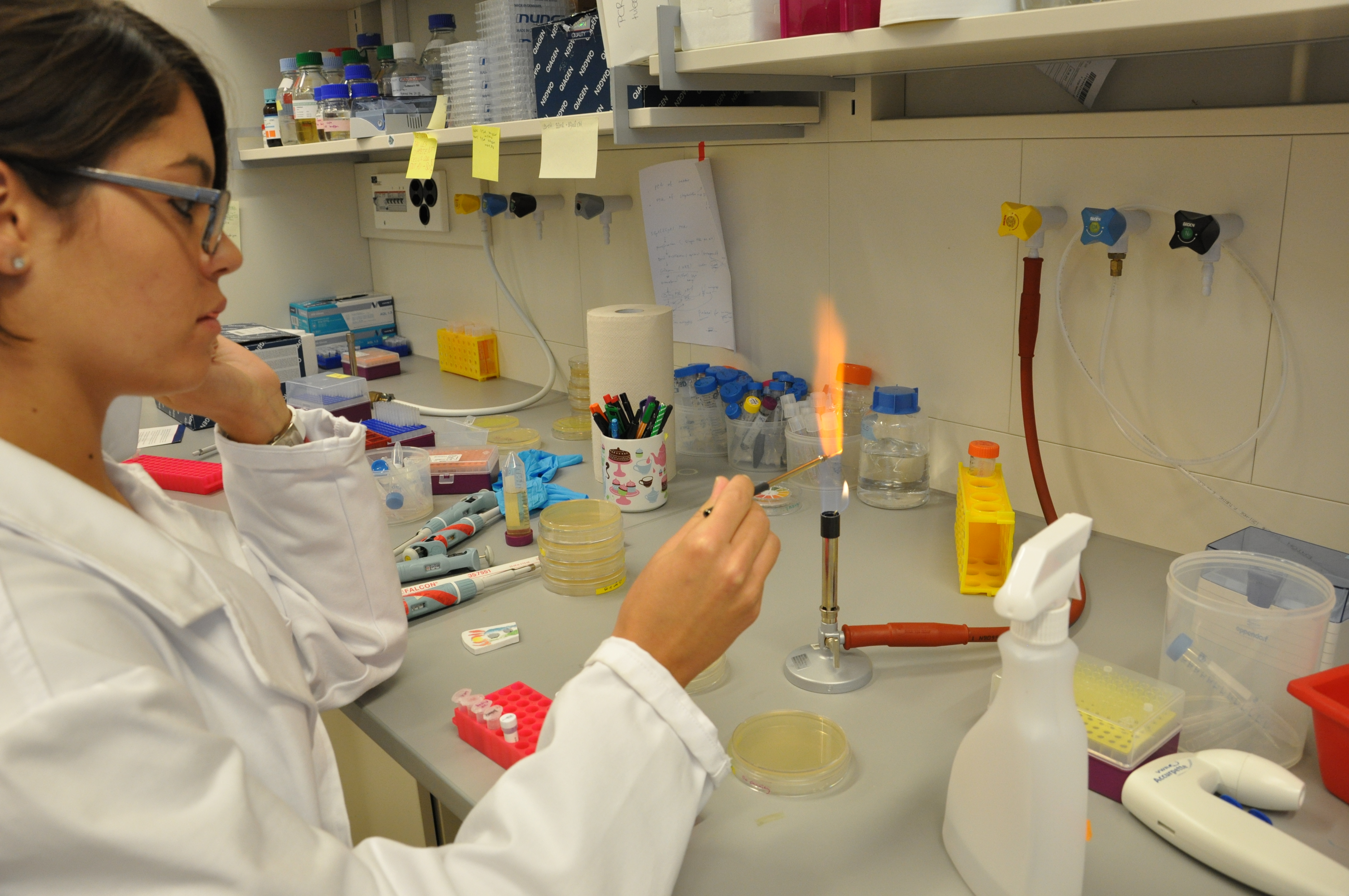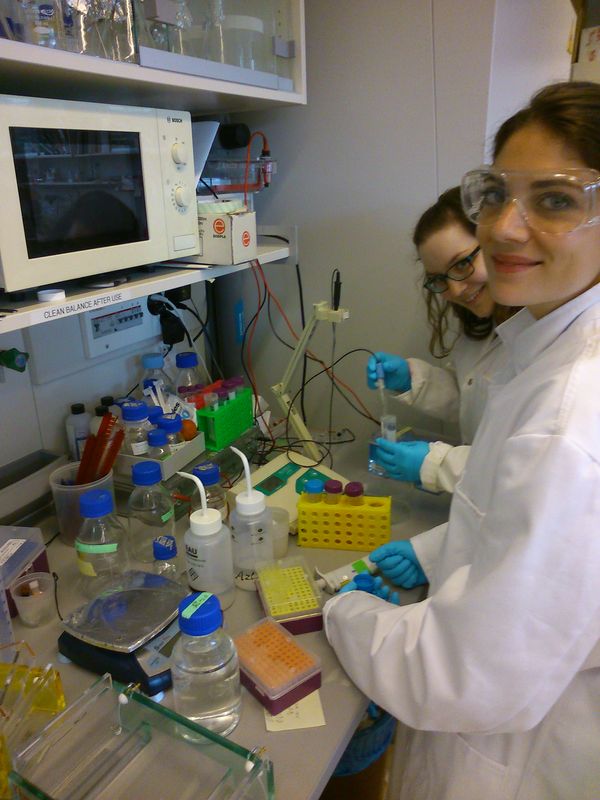Header
Risk assessment and safety: TAXI.COLI: smart drug delivery
Basic Safety Form 1
Safety Form 2 GelE
Safety Form 2 MMP9
Safety form 2 MMP2
Safety forms were approved on October 3rd, 2013 by the iGEM Safety Committee.
As you might know iGEM is not only about working in a lab, pipetting in lab coats and doing cool stuff with bacteria. iGEM is also about asking yourself the good questions when it comes to the implications that our project could have on our peers and on our environment. The team decided that evaluating our project with a risk assessment was a good way to bring into focus what could be the impacts of our project on co-workers, peers and on nature.
Overview: Our project consists mainly in engineering E.coli in order to transport nanoparticles filled with drugs to a specific site of action where the particles would be digested by released gelatinase, thus allowing the drugs to enter this particular site where its action is required. An application of such a device could be treatment of colon cancer. E.coli being already a part of our gut flora, we thought it could be a good chassis to begin the experiments with.
1: Do the biological materials used in your lab work pose any of the following risks? Please describe
a. Risks to the safety and health of team members or others working in the lab?
The biological materials we are working with in the lab are thought to be as safe as possible for all the team and co-workers. Indeed, our plan since the beginning of the iGEM project is to build a project which couldn’t raise any particular safety issues for us, the students, but also for our co-workers in the lab. We are particularly interested in designing a project that relies on simple ideas, but which is still innovative, original and challenging. Besides, our team followed some specific biosafety lectures given by Stéphane Karlen, our school safety coordinator.
b. Risks to the safety and health of the general public, if released by design or by accident?
Our project would require some improvements in order for Taxi.Coli to be used as a drug delivery system. These improvements are detailed below. However, once they are made, the designed release of this drug delivery system should not bring any safety issue. Furthermore the lab is a confined environment and it is organized in a way that no biological material could get out. Let’s imagine that some biological material could get out of the lab. It could still not cause any arm to the general population, since the quantities of bacteria we are working with are very small, and also E.coli K12 that we are using is not armful nor toxic and is a lab strain, meaning it cannot survive for a long time out of the lab. Furthermore, our labs are restricted to visits.
c. Risks to the environment, if released by design or by accident?
The main problem that exists regarding the environment is resistance to antibiotics. Bacterial conjugation is the horizontal transfer of genetic material by direct cell-to-cell contact or by a bridge-like connection between cells. This could happen when engineered bacteria containing plasmids resistant to antibiotics are released in the environment, thus exchanging their genetic material with wild-type bacteria. Therefore, providing antibiotic resistance to bacteria that originally are not resistant. A second potential risk is that the quantity of bacteria released in the environment may disrupt the environmental balance. However we are working with really small quantities of bacteria, so that the second potential risk is not likely to happen. Still, for the antibiotic resistance, some precautions need to be undertaken. For example, our entire waste is first inactivated and then burned to prevent any release in the environment by our own waste treatment company in our university. All the material we use is autoclaved and sterilized. Furthermore, we are working with E.coli DH5alpha (K12), which is a lab strain that wouldn’t survive in the environment.
d. Risks to security through malicious misuse by individuals, groups, or countries?
Our labs are under constant control thus preventing any misbehavior or attempt to cause arm. Cameras, security agents and co-workers are on constant vigilance. Lab access is restricted at night and after working hours. Our main concern when designing our iGEM project was safety. We wanted to stick generally to RG1 organisms showing that great things can be accomplished also being respectful to the environment and to people. Even in malicious hands, our project couldn’t cause arm or cause a risk to the individuals, groups, countries or environment, because it is designed to be safe since its creation.
2: If your project moved from a small-scale lab study to become widely used as a commercial/industrial product, what new risks might arise? (Consider the different categories of risks that are listed in parts a-d of the previous question). Also, what risks might arise if the knowledge you generate or the methods you develop became widely available?
If our project moved from a small case study to a commercial product, the measures regarding the waste treatment should be even more stringent to make sure a high quantity of antibiotic resistance bacteria is not released in the environment. Also, when treating a high concentration of bacteria in the lab, the co-workers should be particularly cautious when handling them. Although E.coli K12 is not risky for humans, it is always better to be more careful when handling bigger quantities of biological material and even more cautious regarding the waste treatment. Although quantity shouldn’t have an impact on proper behavior in the lab. Working with small quantities of RG1 in BSL1 labs doesn’t mean one shouldn’t have an appropriate, cautious and respectful behavior towards co-workers, environment and general public.
3: Does your project include any design features to address safety risks?
Our project doesn’t contain any feature to address safety risks yet, as we are working on a proof of principle project. However, we suggest several possibilities to address safety risks considering these two different cases: -Assuming our project could become widely used as a commercial medical application. -In case of accidental dissemination in the environment. As a design feature to prevent any arm our project could cause in dissemination, we imagined engineering our chassis with an artificial amino acid, thus preventing it from surviving out of an environment that is not containing the artificial amino acid. In case:
a) Our project becomes a medical application: the patient ingests pills containing the artificial amino acid during the whole treatment with the engineered E.coli. When the treatment ends, the patient stops ingesting the artificial amino acid, thus not allowing the engineered E.coli to survive in the colon anymore. We can also think of a way of treating, inactivating or burning the biological waste. Another option would be to implement an induced apoptosis mechanism. The better way would still be to confine the patient during the whole treatment in the hospital so the waste could be directly treated by the hospital itself.
b) Our engineered E.coli are disseminated by accident in the environment: The chassis we used for our project as a proof of principle chassis is not suitable for medical application or to survive in the environment, since it is a lab strain named DH5-alpha of E.coli K12. This strain is not able to survive neither in the environment nor in the human body. Furthermore, the same mechanism as before can be also applied to the environment. Let’s assume our artificial amino acid engineered E.Coli is disseminated in the environment. The bacteria won’t survive considering the artificial amino acids are not present in the environment. The option with an induced apoptosis mechanism would also prevent spreading in the environment.
Since this is only assumptions and suggestions concerning the features addressing safety risks, it would be very important to keep in mind the safety assessment we explored above and the safety precautions we presented. It would be interesting to test it maybe next year for iGEM 2014 competition?
4: What safety training have you received?
All students at EPFL received specific lectures on biosafety and proper behavior in the lab. All members of the iGEM team followed these lectures and filled the safety form properly.
5: Under what biosafety provisions will / do you work?
a. Link to our institution biosafety guidelines
http://sv-safety.epfl.ch http://sv-safety.epfl.ch/files/content/sites/sv-safety/files/SAF_Rules_Vademecum_[E]-1.pdf
b. Link to our Institutional Biosafety Committee
http://securite.epfl.ch/safety-en http://sv-safety.epfl.ch
c. Link to our national biosafety regulations
http://www.bafu.admin.ch/publikationen/publikation/01614/index.html?lang=fr http://www.admin.ch/opc/fr/classified-compilation/20100803/index.html http://www.admin.ch/opc/fr/classified-compilation/19994946/index.html
d. Biosafety Level rating of our lab according to WHO Biosafety Manual
BLS 1
e. Risk Group of our chassis organism.
RG1
For more information and contact about biosafety and our project in EPFL:
Stéphane.Karlen@epfl.ch
Sabrina.Leunenberger@epfl.ch
Charlotte.Broennimann@epfl.ch
 "
"



